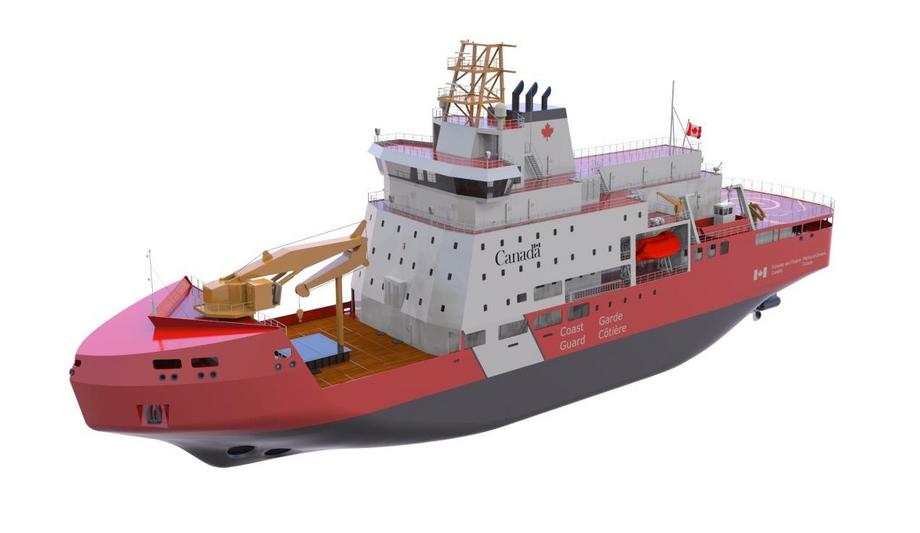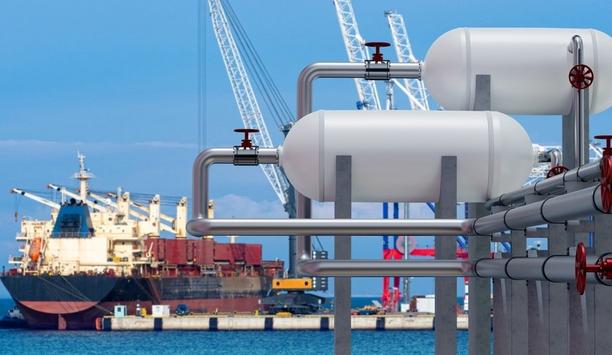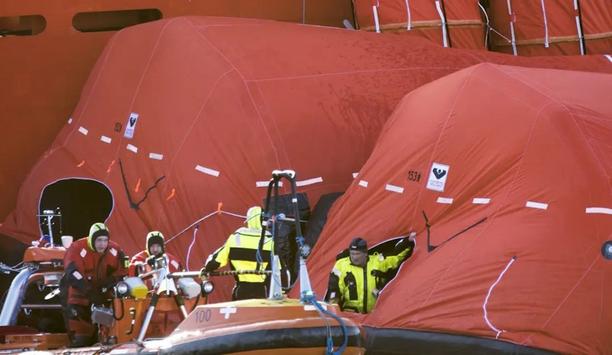Vestdavit has landed its biggest-ever order with a major contract to deliver high-specification davits for six multi-purpose vessels being built for the Canadian Coast Guard at Seaspan Shipyards in Vancouver.
The Norwegian davit supplier will initially provide a total of six FF-15000 davit systems - one for each vessel - with options for a further 10 such units under its second contract secured with the Canadian shipbuilding group.
Extensive davit delivery
It comes on the heels of an order that Vestdavit won in 2023 with Seaspan to supply RHIB davits for the Polar Icebreaker also under construction for the Canadian Coast Guard.
“We are extremely honoured to have been awarded an additional contract with Seaspan and entrusted with such an extensive davit delivery, which we consider to be a strong vote of confidence from the shipbuilder in the proven reliability of our boat-handling systems,” says Magnus Oding, General Manager of US subsidiary Vestdavit Inc.
Efficient delivery model
The hydraulically operated FF-15000, which is an adaptation of a larger FF-type davit delivered for an earlier project
“This also represents a vindication of our efficient delivery model with easy access for the yard to digital drawings during the ship design phase, timely delivery, effective follow-up by Vestdavit during construction, and ease of installation with our modular systems.”
The hydraulically operated FF-15000, which is an adaptation of a larger FF-type davit delivered for an earlier project, is based on the F-frame system that comprises a large frame with no structure behind or underneath the daughter craft. This allows for greater flexibility in the shape and volume of the boat being handled, with the main structure aft/forward of the boat.
Single and dual-point configurations
The flexible, deck-mounted davit, with a 15000kg safe working load (SWL) capacity, can operate in both single and dual-point configurations for optimal performance with various sizes of craft.
It will be able to handle both a 9m self-propelled barge and 7.5m RHIB, as well as a 20-foot ISO container by incorporating into the system adjustable lifting points that allow for handling of boats and containers with different lifting points, sizes, and weight.
Advanced davit features
The motion-compensated davit also incorporates advanced features such as shock absorbers, dual winches that each have an independent constant tension, and an anti-pendulation device with guide arms for maximum stability to safely launch and recover boats in rough sea conditions.
Coastguard operations are dependent on a high level of davit efficiency and availability, as well as redundancy, for frequent launch-and-recovery operations to perform a variety of essential tasks, such as rescue missions or law enforcement.
Mission-critical operations
Vestdavit’s boat-handling systems have proven robustness through decades of real-life operation
The new multi-purpose vessels for the Canadian Coast Guard are intended to operate year-round on Canada’s eastern and western seaboards and will support critical services such as icebreaking in moderate conditions, maritime search and rescue, scientific research, environmental response, emergency towing, maintenance and deployment of buoys, as well as support for offshore fisheries patrols.
Vestdavit’s boat-handling systems have proven robustness through decades of real-life operation with navies and coastguards in different conditions around the world, ensuring mission-critical operations can be carried out effectively.
Multi-role versatility
This is allied with innovative technology developed in collaboration with clients to provide solutions that are tailored to their specific requirements, with versatile functions to meet a range of operational needs.
“Solutions such as the FF-15000 provide the client with sophisticated features to meet high specifications for fail-safe davit operations. This important reference project builds on Vestdavit’s already strong reputation in our core navy and coastguard market with a solution for enhanced davit reliability,” Oding concludes.











